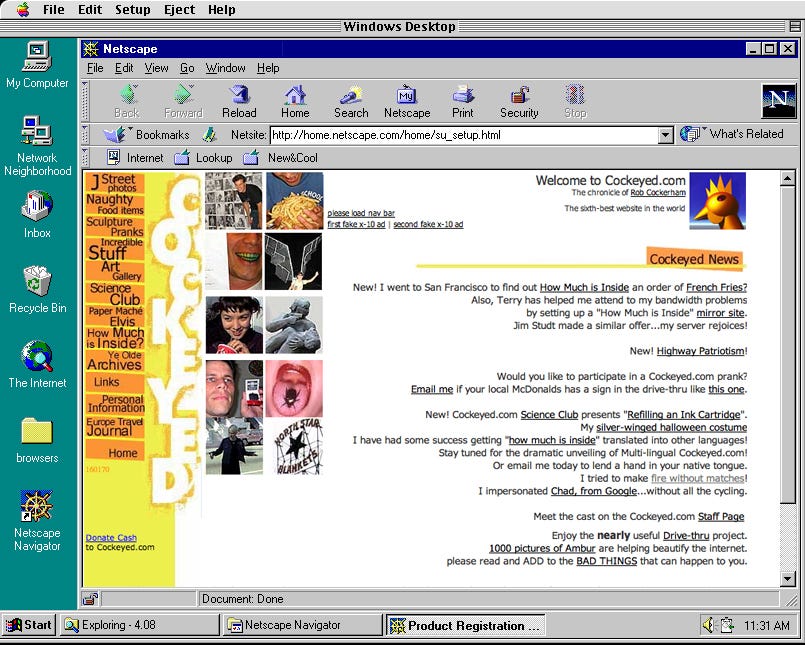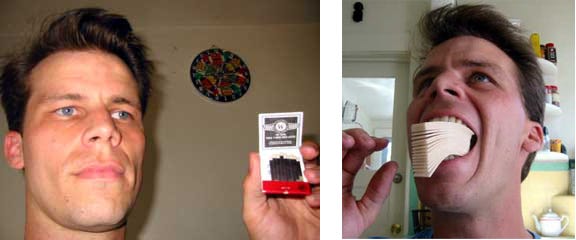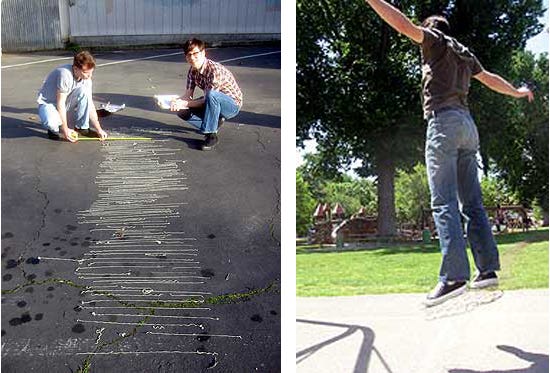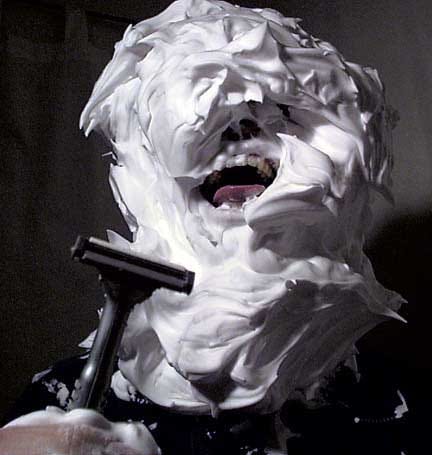Know Your Internet History! A Chat With Cockeyed's Rob Cockerham
by Mark Allen

The pre-2000 World Wide Web was like the Wild, Wild West. There were no blog or social media templates providing touch-screen-ease for kids with smart phones and 4,999 friends. As the early American settlers built their cabins with logs and mud, so early website builders crafted their websites out of raw HTML. Flash, frames and Java were the blood, sweat and tears of these pioneers, who established outposts like the first-ever website and the first true internet meme before bravely going on to fight the first troll wars. Who were these early heroes of the internet? Who ventured into the “Internet Help” section of bookstores in 1996 seeking titles like HTML For Dummies? Who purchased server space by-the-month over the phone from some guy in a building in Florida they would never meet? Who lost years of their lives fretting over the “Slashdot effect” or page visit counters?
In this series we’ll be talking to the people who created these now-landmark websites. Up first: Rob Cockerham, whose website Cockeyed has been chronicling ambitious public pranks and scientific product experimentation since 1997.
Website: Cockeyed
Creator: Rob Cockerham
Date created: 1997
Wayback Machine earliest archive: February 29th, 2000
Internet history relevance: pranks, product advice as consumer culture commentary, science experiments as entertainment, humorous digital photographs with text as a storytelling medium
Mark Allen: You were one of the first people on the internet to do what you do. What were your pre/non-internet inspirations?
Rob Cockerham: The first thing that comes to my mind was watching “MASH” reruns. I’d have to say that was a fundamental comic inspiration. For my drive to examine everyday life with a scientific slant, I attribute that to my dad. He is retired now, but he was a forensic scientist for the state crime lab in Sacramento. He also had 1,000 hobbies, such as making glaze for pottery, plant breeding and grafting, local politics, sculpture, wine making… a taste of everything that had a learning curve. He is a great teacher, and one of the lessons which I held onto was that you should keep good notes. I keep good notes, and I honestly think it’s better to keep good notes than it is to rigorously apply the scientific method.
You seem to have a love for information, statistics and pranks… often combined. Thinking back, did you have any ideas about doing these things publicly before the internet came along?
Oh, yeah, but I was a bit too shy actually. I made a couple of movies with friends, a comic with my brother. I thought about starting a puppet show. Now that I think about it, a puppet show would have been a great way to perform without showing my face. Also, at UCSB, I made a seven-part series of informational fliers for bus stops, titled “Information for People Who Are Waiting,” with subjects such as “Millard Fillmore, our 13th president.”

Do you remember the moment you thought, “Eureka! I should make my own webpage!”
Sure. I was working in a call center doing internet tech support for MCI internet. Everyone I worked with sat in front of a computer, but we didn’t need them for work because we’d all memorized the windows internet setting pages. All day we sat and browsed the web. Most of us were learning HTML, creating web pages at night and then coming in to show them off to our co-workers. But I had an advantage! I had a scanner. My web pages featured original images, not just reworked stuff I’d found online already. I think my very first webpage was one built from scanned images of eight different types of razor blades. I didn’t actually scan images, I just put the blades into the scanner and scanned them. Of course, this was posted in Geocities originally.
Where/how did you learn to build with raw HTML?
I had a circle of friends who frequented Tower Books. One of them went through a shoplifting phase where he stole one book per day every day for… uh, ever. He actually took requests from us, so I asked for a giant HTML teaching/reference guide. That’s right. A paper book. Combined with the eager audience at work, I was pretty motivated to make a mountain of goofy stuff to share online.

You were initially linked to by a lot of places like Slashdot, BoingBoing and MetaFilter. What else kept you going when there was nothing like you on the internet?
Email! I got so much email. It would take an hour a day just to read it. Actually, about an hour a day to delete spam and read the actual human correspondence.
Your “Terrace Cafe sculpture replacement” prank, in which you kept substituting different icons into a sign at a mall food plaza, reads like a wacky 90s sitcom sub-plot. I also love your ongoing quest to create “hot air soap bubbles,” and your “spring shoes” story, where through trial and error you finally constructed wearable spring-soled shoes like Wile E. Coyote used in the Warner Bros. cartoons. These are gripping sagas! At what point did you decide to use chronological photographs, in HTML “frames” with text, to tell a story?
After about three weeks of adding photos with a scanner, I splurged and bought a tiny panasonic digital camera for $500. It ran on AA batteries, had a detachable flash and its maximum resolution was one mexapixel. That was the best thing ever. Carrying it around in those days, people would stop me on the street, not because it was a small camera, but because it had a postage-stamp sized LCD screen that was pretty bright. No one had glowing rectangles in 1998. Just me. Also, it was many people’s first encounter with “You can just take a picture and immediately see it!” I had a ton of free time, smart, willing friends and an instant audience of thousands. After documenting a few normal things, I started to document abnormal things. The chronological set of photographs seemed like the best way to showcase almost any adventure. Cockeyed.com was the perfect excuse to try any project. Also, once I had the camera, the adventures were nearly free. It was (and remains) a low-priced hobby.
Some of your old pranks are still ingenious by today’s standards. Your T.G.I.Friday’s menu prank — where you created and distributed an alternate, very funny version of the restaurant’s Atkins-menu page (Bunless Burgers: “Specially flavored to taste like hot dogs”) — is a sick classic. It was almost an early concept of the “flash mob.” What are some of the things you feel would have been easier with your site today that you couldn’t do in the late 90’s/early 00’s?
Unfortunately I can’t address that question, because I’m still stuck in 2005. Organizing things was always possible on the web, but today I can enlist helpers that also have cameras, for a nationwide prank, for example. I can post stuff directly from my phone, but I rarely do, because I always add a story, and I’m more comfortable editing text on a full size keyboard. Selling advertising is definitely easier. Finding images online has improved a ton. There was a time when the only images more than 300 pixels wide were x-rated.

Why was your Costco Sign prank page taken down?
Costco didn’t think it was funny that I had a team of people put signs in a bunch of stores for non-existent products such as “Frozen Supermodel 3 lbs. bag,” “Party Chow” and “Personal Irrigation Kit.” I made two critical errors in judgement: #1 I paid for a Costco membership and #2 I put my actual phone number on the application.
Your influence certainly seems to be all over the web these days, with endless YouTube videos of people putting Mentos candy in Diet Coke bottles and whatnot. What do you think of today’s internet?
There is a lot of noise being produced, junk that doesn’t have any real body to it. But not everybody is brain-locked onto it. The good stuff (paradoxically called “heavy”) will usually rise to the top.

Mark Allen is a writer and performer living in New York. He has been on the internet way too long.
